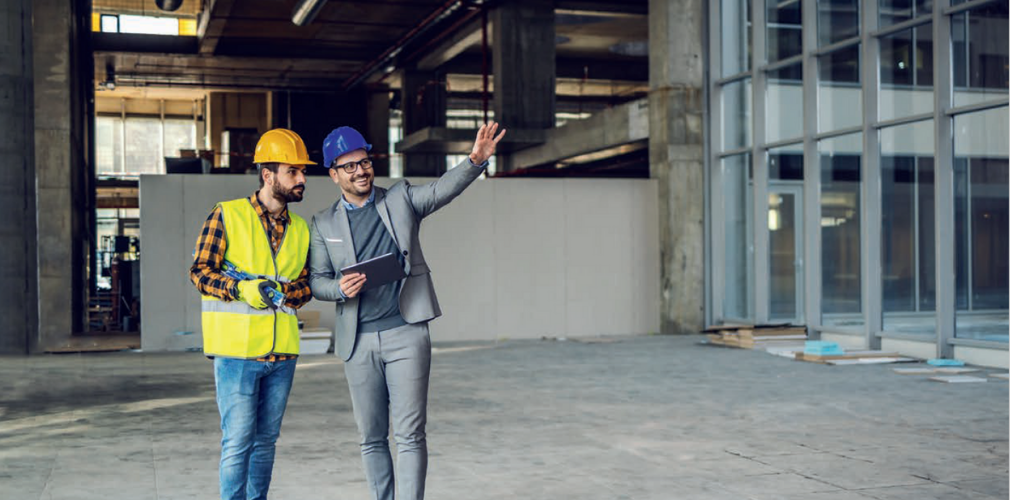Nigel Morrey, Technical Director at Etex Building Performance discusses the importance of understanding how building materials interact in real-world scenarios.
The performance of building products is under scrutiny. New legislation is being brought forward to create a more robust regulatory framework and make clearer the responsibilities held by designers, developers, product manufacturers, contractors and building owners. This is an important step but there is still a long process for the Building Safety Bill to become law.
In the interim there are changes that materials providers and installers can maketo provide peace of mind to clients and end users that building products will live up to their promises. Crucially, we need to see more real-world testing of materials and an explanation of their performance in systems. This is particularly vital for passive fire protection materials and their interface with the building fabric.
Fire protection systems come in two forms:
Active protection such as fire alarms, sprinklers and fire extinguishers, and passive protection – a group of systems that compartmentalise a building through fire-rated walls and floors, structural protection, and critically firestopping.
Building fires are complex, scientific events and the effectiveness of passive fire safety products can be affected not only by the materials they are abutted against, but also by penetrations in the building fabric. Whether installing systems directly or working with partners, contractors need to be mindful of this wider interplay of materials.
Testing system performance, not product
The key question is how materials interact. How is the fire performance of a timber structure affected when it’s joined to a concrete frame construction? Regulations tend to deal with individual products, but fire is influenced by the performance and interaction of building systems as a whole. Material providers have a vital role to play. They need to create testing rigs that study the performance of products working in conjunction with each other.
It’s about holistically testing systems that match real-world conditions as closely as possible. This is particularly important for unusual or ground-breaking designs where materials are used in unexpected ways.
Testing a standard steel beam, for example, is not the same as understanding how the impressive steel vaulted ceiling at London King’s Cross station will react and hold up structurally when exposed to fire.
Building up this bank of data will help specifiers and in turn installers to identify the right materials for different design configurations.
When it comes to the construction process, detailed alterations such as service penetrations can also compromise a building fire safety system. Every cavity in a structure is a route that fire could travel through.
Take the partition system in a modern apartment or office as an example. It will rarely mirror standard models, but will be penetrated by plug sockets, telephone wires or cables for satellite television, potentially altering the way the overall system behaves. There will also be varying junctions to consider and the relationship between walls and ceilings, as well as the positioning of loadbearing elements, which will differ in each case. It is vital that these elements are accounted for during the development, testing and installation of materials to ensure that they perform as expected, now and in the future when occupiers may add or change services.
Collaboration is key
Putting in place more robust testing processes is one thing. Knowledge also needs to be cascaded up and down the supply chain. Keeping to the building specification and manufacturers’ design details is paramount to constructing safe buildings. By sharing information and best practice, materials providers can ensure that their partners understand the thinking behind these guidelines and dispel any temptation to cut corners.
Construction is continuing to evolve, with new ways of building, modern methods of construction and innovative materials coming to the fore. This is vital to help us deliver faster, more cost-effective and, ultimately, better buildings that meet the demands of 21st century life. However, if we are to continue pushing the boundaries of good design and build practices, then we need to make sure that our approach to building material development and installation keeps up.
Developing a better understanding of how different materials perform together and the stresses they are likely to be put under by realworld conditions is key. This will help to ensure that the buildings we construct in future are safe, allowing us to fulfil the creative vision of architects and specifiers while offering peace of mind for building users.
FIND OUT MORE
To attend one of the SFS Working Group meetings or find out how you can get involved with the project work, please contact Joe Cilia joecilia@thefis.org or follow this link or visit www.thefis.org/membership-hub/working-groups/steel-framing-systems-working-group/


